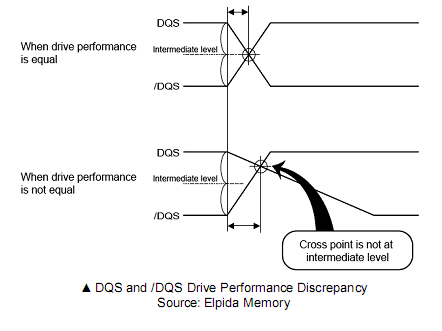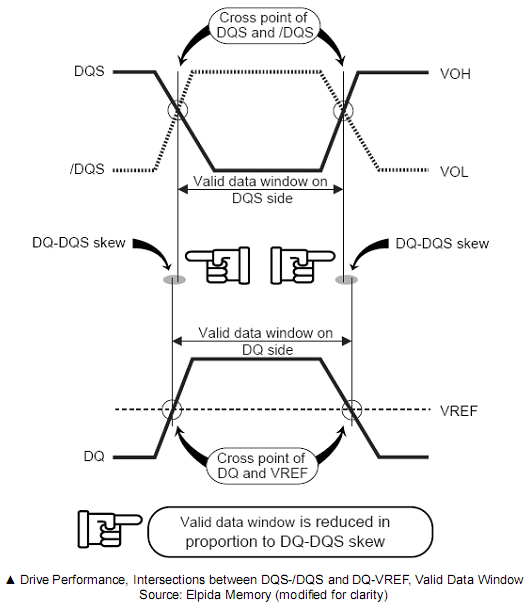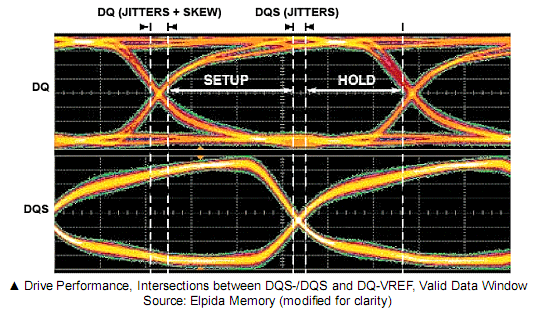
An Analogy: Drive Performance/Drive Strength
Imagine a car going up and down a hill: the closer you push the accelerator pedal towards the floor, the faster the car climbs the hill. Equally true, by stepping on the pedal during the way down will make the descent quicker.This represents an increase in the Drive Performance of your car, so what happens when you increase the Drive Strength too much and reach the top or bottom? Well, you will overshoot the peak with four wheels leaving the ground, flying through the air Hollywood style. That is known as “Overshooting”.
It’s equally applicable on the way down a slope, where exerting too much Drive Strength will cause the momentum to make you Overshoot, lose control and crash.

Data Strobes (DQS) Drive Performance
When the Data Strobes DQS and /DQS have different drive performance, they will have a distinct and unbalanced transition time.

With the Differential Data Strobes design, DDR2 uses the intersection between the DQS and /DQS signals as a reference for data transfer. Any skewing has an adverse consequence on the timing accuracy and potentially creating artificial DQS-DQ skew. The memory controller will move the Data (DQ) signals by synchronising with Differential Data Strobes (DQS), which in turn tracks the System Clock.
The DQ signal is using the intersection with the Reference Voltage (VREF) as a guide to synchronise with the DQS. The two intersecting points between DQS-/DQS and DQ-VREF have to be aligned for the best data transfer. As a result, tweaking the VREF can sometimes increase stability for troubled system. However, for the users at home, there is no way to observe and know exactly what is going on.
The DQ-DQS skewing effect reduces the time period that can be used by the memory controller to send and receive data signals, which causes a reduction of the Data Eye and Valid Data Window: successful signal transmission requires enough Setup and Hold margins. DQ-DQS skew is generally detrimental for DDR2 memory modules performing at 800MHz or faster.

To summarise, the driver impedance adjustment engine and OCD calibration circuits are used to adjust the pull-up and pull-down Drive Strengths of DQ and DQS-/DQS, so that DQ-DQS skew is as minimal as possible, the result is an expanded Data Eye with a larger margin.

MSI MPG Velox 100R Chassis Review
October 14 2021 | 15:04








Want to comment? Please log in.